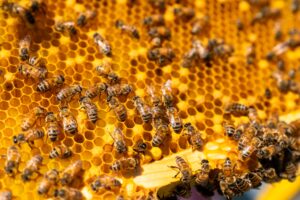Catching marron for a tasty feed in summer is a tradition for thousands of West Aussies.
But trapping the native crustaceans in Margaret River in winter is for science, not leisure.
And a group of conservationists, scientists and volunteers are trying to save a critically endangered species of marron from extinction.
BIG CRUSTACEAN, ITTY BITTY LIVING SPACE
Marron are freshwater crayfish endemic to southwest WA.
They are the biggest freshwater crayfish in WA and the third largest in the world.
A genetic discovery split marron into two species in 2000.
Hairy marron—named after tufts of hair-like bristles on its shell—were once abundant within Margaret River, but are now found only in its upper reaches.
Smooth marron were introduced in the 1980s and are rapidly replacing the resident ‘hairys’.
Fewer than 1000 hairy marron are thought to exist in the world.
“To put that into perspective, there’s about half as many hairy marron left on the planet as pandas,” Hairy Marron Recovery Project Leader Dr Rodney Duffy says.
“They are unique to this part of the world, so we should have an obligation and desire to preserve them.”

WHY ARE THEY DISAPPEARING?
The hairy marron’s struggle to survive is not fully understood.
A team of government departments, universities, conservation groups and volunteers are working together to unravel the mystery before it’s too late.
Part of the problem is that smooth and hairy marron breed together, creating a hybrid.
Over time, the hairys and hybrids vanish.
“It’s complete annihilation of the hairy marron genes,” Rodney says.
REMOVING THE INVADERS
On 20 winter nights of the year, Nature Conservation Margaret River Region volunteers and Department of Primary Industries and Regional Development staff head to the waterway.
Under the cover of darkness, they catch crustaceans in parts of Margaret River where hairy marron are hanging on.
A clipping of the trapped animals’ tail tissue is taken and used for on-the-spot genetic analysis.

Smooth and hybrid marron are released downstream to give the hairys some breathing space.
A small sample of healthy, mature, genetically-pure hairy marron are taken to a captive breeding facility at the Pemberton Freshwater Research Centre.
IT’S BUSINESS TIME
About half the hairy marron left in the world are at the captive breeding facility—but they’re not mating.
Researchers are studying whether light or water temperature could be to blame.
Time is running out to save the species, Rodney says.

The recovery plan is to breed hairy marron and create new populations in dams in the Margaret River catchment.
These animals could be eventually reintroduced back into Margaret River.
“If we can’t get this breeding happening, we’re kind of stuck,” Rodney says.
A FIGHTING CHANCE
Marron mate once a year in the wild, usually in spring.
Rodney says hairy marron may breed a month or two later than smooth marron.
This headstart could give juvenile hairy marron a physical advantage when it comes to locking claws to fight and feed on each other.
“Juveniles like to cannibalise each other, and the winner of a fight is generally based on size,” Rodney says.
HOW CAN YOU HELP?
The recovery team would love to hear from people in the Margaret River catchment who stocked their dams with local marron before 1980. You may have genetically pure hairy marron that could boost the gene pool!
They’re also keen to find local dams without marron where they could stock captive-bred hairy marron.
“The community is essential to the recovery effort,” Rodney says.
UWA, ECU, Murdoch Uni, South West Catchments Council and government departments are helping too.
Contact Nature Conservation Margaret River Region to get involved.










